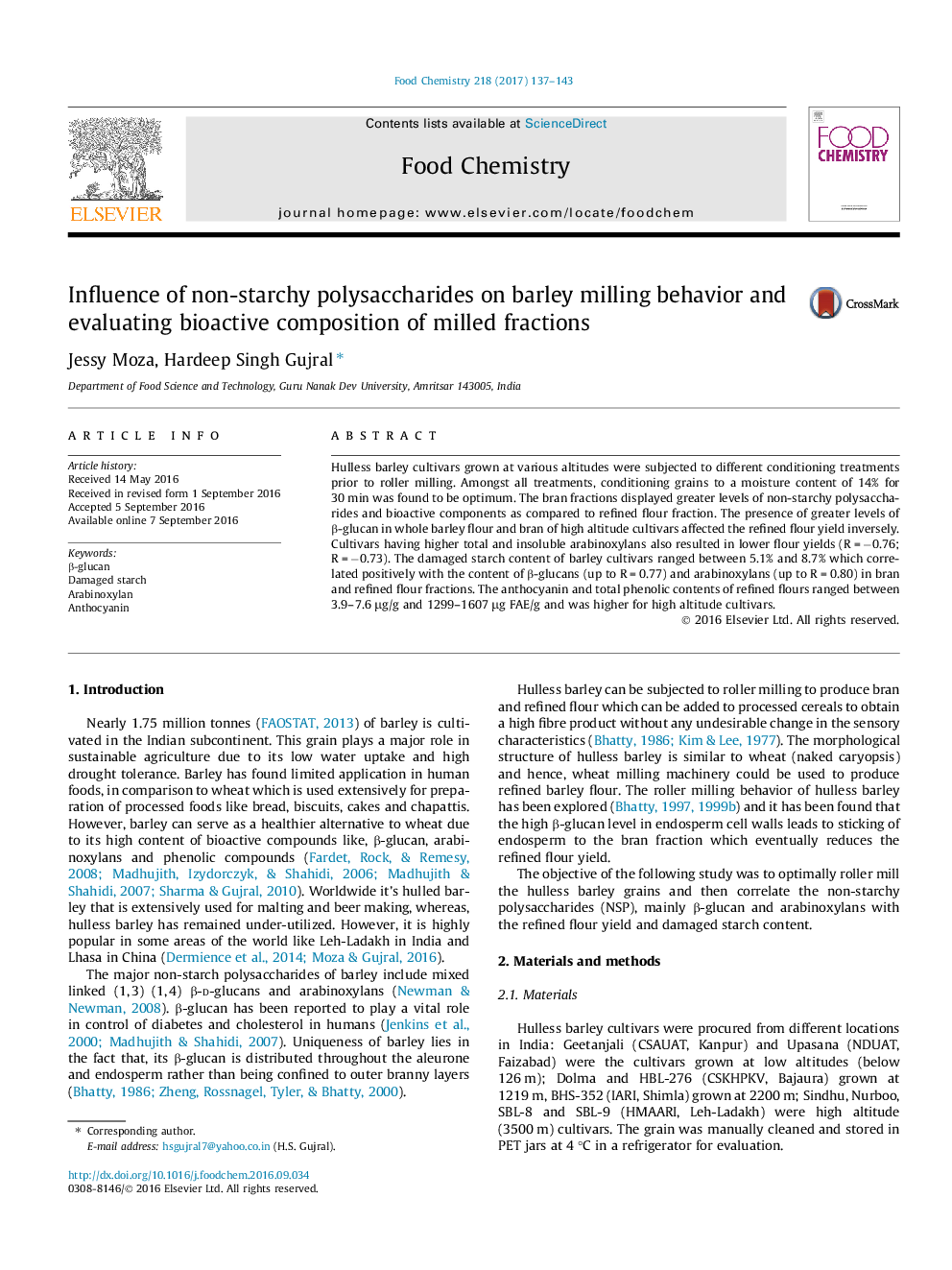| کد مقاله | کد نشریه | سال انتشار | مقاله انگلیسی | نسخه تمام متن |
|---|---|---|---|---|
| 5134048 | 1492074 | 2017 | 7 صفحه PDF | دانلود رایگان |

- Starch damage in flour correlated positively with β-glucans and arabinoxylan content.
- Higher levels of non-starchy polysaccharides lead to low flour extraction rates.
- Flour yield can be increased by using optimum conditioning treatments.
Hulless barley cultivars grown at various altitudes were subjected to different conditioning treatments prior to roller milling. Amongst all treatments, conditioning grains to a moisture content of 14% for 30 min was found to be optimum. The bran fractions displayed greater levels of non-starchy polysaccharides and bioactive components as compared to refined flour fraction. The presence of greater levels of β-glucan in whole barley flour and bran of high altitude cultivars affected the refined flour yield inversely. Cultivars having higher total and insoluble arabinoxylans also resulted in lower flour yields (R = â0.76; R = â0.73). The damaged starch content of barley cultivars ranged between 5.1% and 8.7% which correlated positively with the content of β-glucans (up to R = 0.77) and arabinoxylans (up to R = 0.80) in bran and refined flour fractions. The anthocyanin and total phenolic contents of refined flours ranged between 3.9-7.6 μg/g and 1299-1607 μg FAE/g and was higher for high altitude cultivars.
Journal: Food Chemistry - Volume 218, 1 March 2017, Pages 137-143